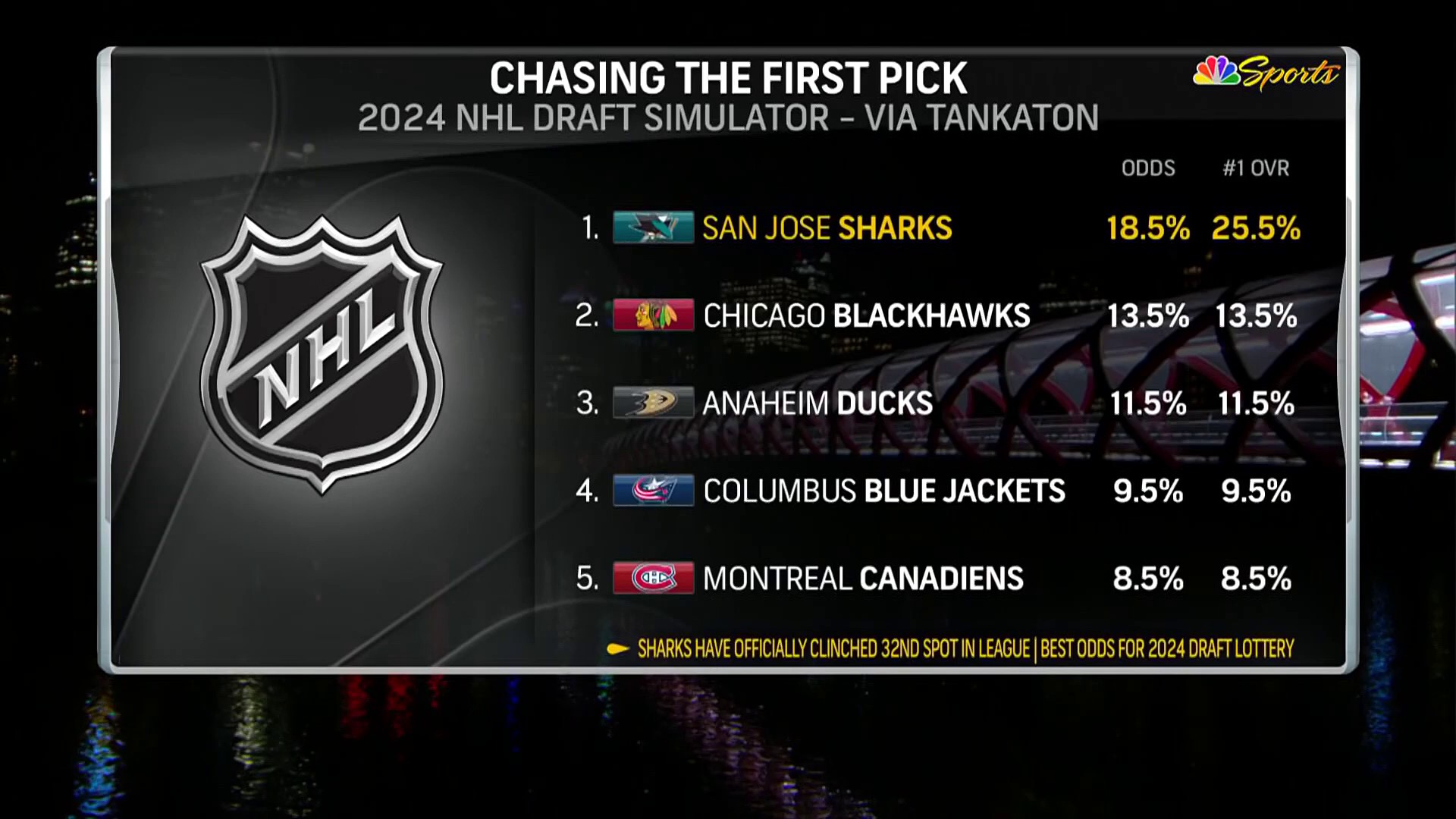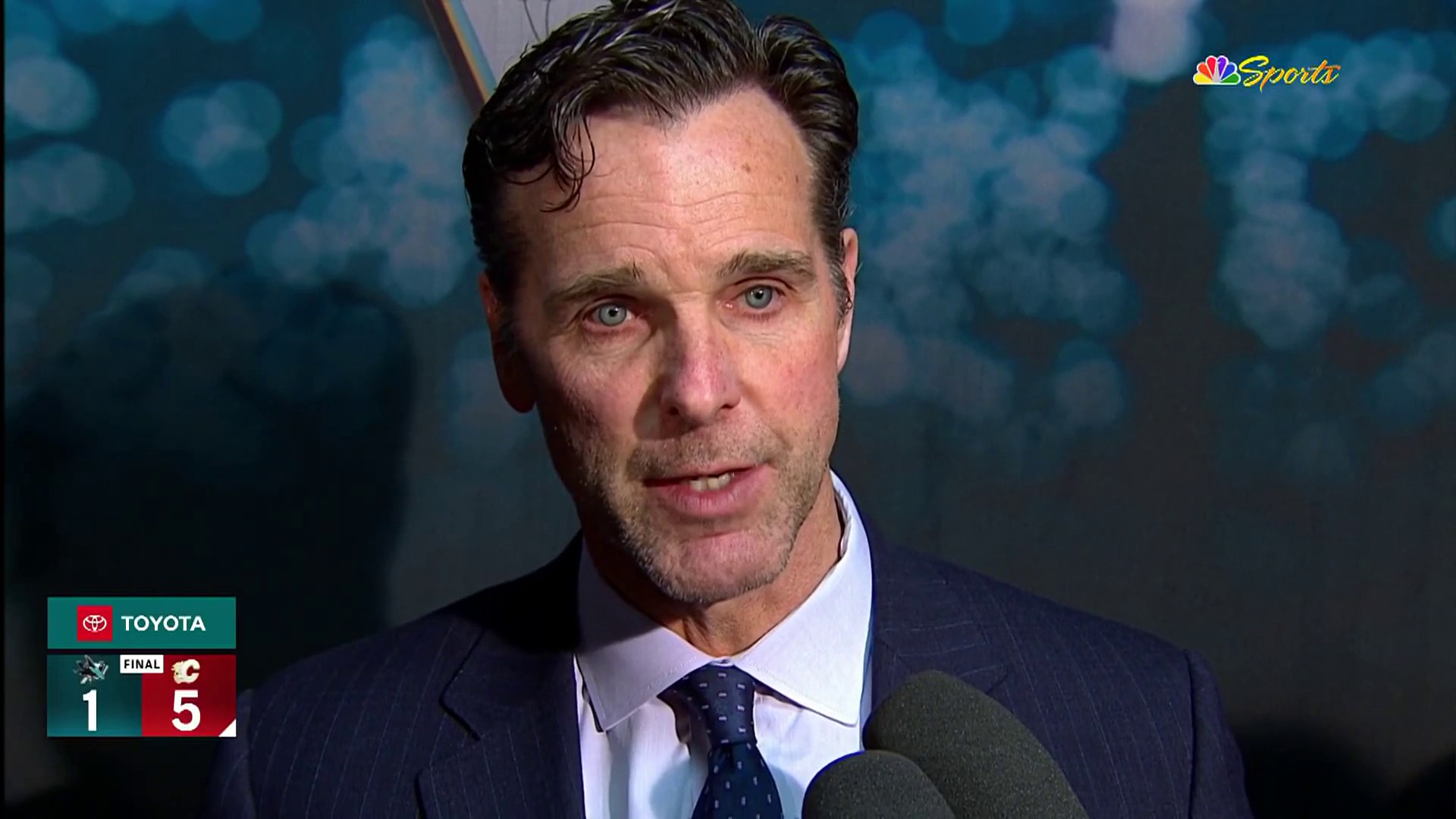
SAN JOSE -- Jimmy Howard hasn’t played against the Sharks this season, but he knows what’s coming.
The Detroit Red Wings goaltender won’t face San Jose until a Feb. 24 matinee, when he will get his first glimpse at the two-pronged attack emanating from the Sharks’ blue line.
Just what does he expect when he’ll see All-Star defensemen Brent Burns and Erik Karlsson on the same team?
Stay in the game with the latest updates on your beloved Bay Area and California sports teams! Sign up here for our All Access Daily newsletter.
“Oof, I don’t know,” Howard said last week at All-Star media day. “I’ve watched some games, they look like quite the dual threat there.”
Sharks general manager Doug Wilson envisioned as much when he acquired Karlsson in September's blockbuster trade. San Jose entered the season with two Norris Trophy winners, something not seen since Scott Niedermayer and Chris Pronger starred for the Anaheim Ducks a decade ago.
Despite Karlsson’s slow start offensively, he and Burns entered Thursday fifth (43) and first (55), respectively, in points among defensemen. For the third time in franchise history -- and the first in 10 years -- the Sharks have two blue-liners with 40-plus points ... with 30 games remaining.
So, what makes the two so effective? We turned to some of the best players tasked with stopping them, and asked three of the NHL’s All-Star goalies for their thoughts.
San Jose Sharks
[RELATED: Sharks' health on defense could play big role in final months]
Plenty of time
It’s a simple notion, but part of the challenge in stopping Burns and Karlsson is how much they play. When two offensively gifted players are given ample ice time, the points should follow.
“Usually when we play San Jose,” Anaheim Ducks netminder John Gibson said, “one of the two [is] always on the ice for just about all of the time. If you deal with one, then you’ve got to deal with the other one back-to-back.”
Entering the All-Star break, Karlsson (24:59) was 11th in average ice time in the NHL, while Burns was 14th (24:42). Their usage isn't necessarily uncommon, as the Sharks are one of four teams that play two defensemen for at least 24 minutes per night.
What is noteworthy, however, is that both players are actually playing less than in recent years. Burns’ ice time is his lowest since Peter DeBoer took over as head coach in 2015. Karlsson, meanwhile, is playing less than any year of his career except his first two.
It helps, then, that they’re making the most of their time on the rink.
[RELATED: Goaltending questions loom over Sharks in stretch run]
Lots of shots
Since the NHL realigned in 2013, Howard faced off against Karlsson’s Ottawa Senators 12 times. In those matchups, he said he became quite familiar with the Swedish defenseman’s offensive style.
“I know how shifty he can be on the blue line,” Howard said, “how he can slide [the puck along] and get wrist shots through. He’s very, very deceptive that way and he can skate like the wind.”
Almost 55 percent of Karlsson’s unblocked shot attempts this season are wrist shots, compared to just under 50 percent for defensemen as a whole, according to MoneyPuck's shot data. Of the defensemen who have taken more unblocked wristers than Karlsson (125), only Mark Giordano was more reliant on the shot.
Burns has taken more wrist shots than Karlsson, but power is a bigger part of his offensive game in Howard's eyes.
“He's more of a physical presence than Erik,” Howard continued, “and he’s got a lot of heavier shot. He can really fire the puck, but he can also really skate.”
The 32-year-old leads the league with 114 unblocked slap shots, and those comprise just over 40 percent of his unblocked attempts. As of Wednesday, slap shots accounted for approximately one-third of all shots taken by NHL defensemen this season.
Yet the different approaches have led to similar results. No defensemen attempt 5-on-5 shots at a higher rate than Burns and Karlsson, and both players shoot from all over the ice.
“[You’re] just sometimes trying to find the puck, block their shots and hoping for the best,” Tampa Bay Lightning goaltender Andrei Vasilevskiy said with a laugh.
As he noted moments later, that’s easier said than done.
Creating space
Vasilevskiy said that it can be difficult to get a clean view of Burns and Karlsson’s shots, since the Sharks are effective at blocking goalies’ vision.
“They’re moving so fast on the blue line, it can be harder to [track the puck],” Vasilevskiy said. “Especially when there’s a couple of guys in front of the net.”
Howard added that Burns and Karlsson’s ability on the puck can allow the Sharks’ forwards more time to screen an opposing goalie. This season, they’ve taken advantage of it.
Entering Wednesday, five Sharks forwards were among the top 20 in deflections, according to MoneyPuck. Joe Pavelski was also fourth in tips (45), while Timo Meier (26) was tied for 16th.
[RELATED: Sharks' offense has impressed, but a makeover is possible]
Burns and Karlsson open up opportunities for San Jose’s forward corps when they aren’t parked in front of opposing netminders, too. Take, for instance, a goal the Sharks scored against Vasilevskiy on Jan. 5.
When Burns had an odd-man opportunity after gathering a turnover, Vasilevskiy had to respect the defenseman’s shot. That left Joe Pavelski wide open in the slot for a back-door pass, with a gaping net in front of him.
As a result of the ice each of the two can open up, Burns and Karlsson are picking up primary assists at (or around) the highest rates of their respective careers, both in 5-on-5 situations and on the power play. That alone gives opposing goaltenders plenty to worry about.
But when you take it all together? The Sharks have a dynamic few teams can match, according to Howard.
“If I was a San Jose Sharks fan, I’d be really happy with those two on the back end,” he said.


